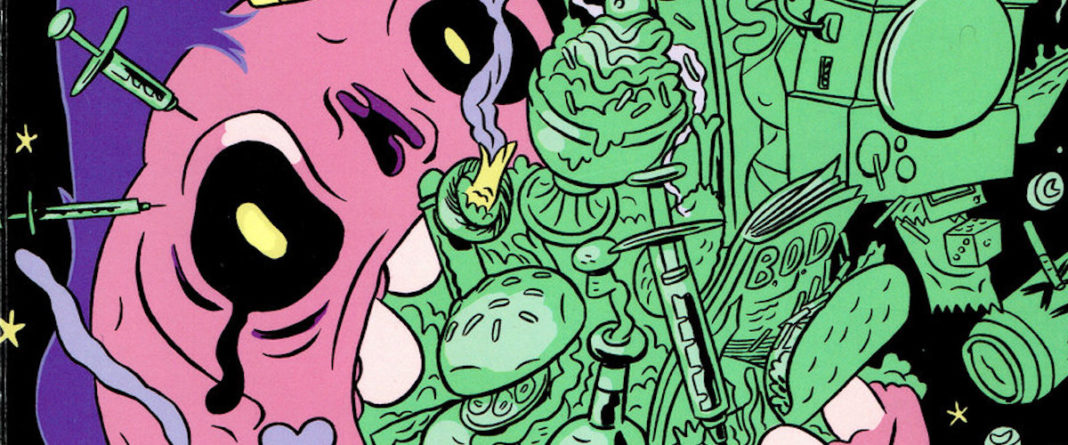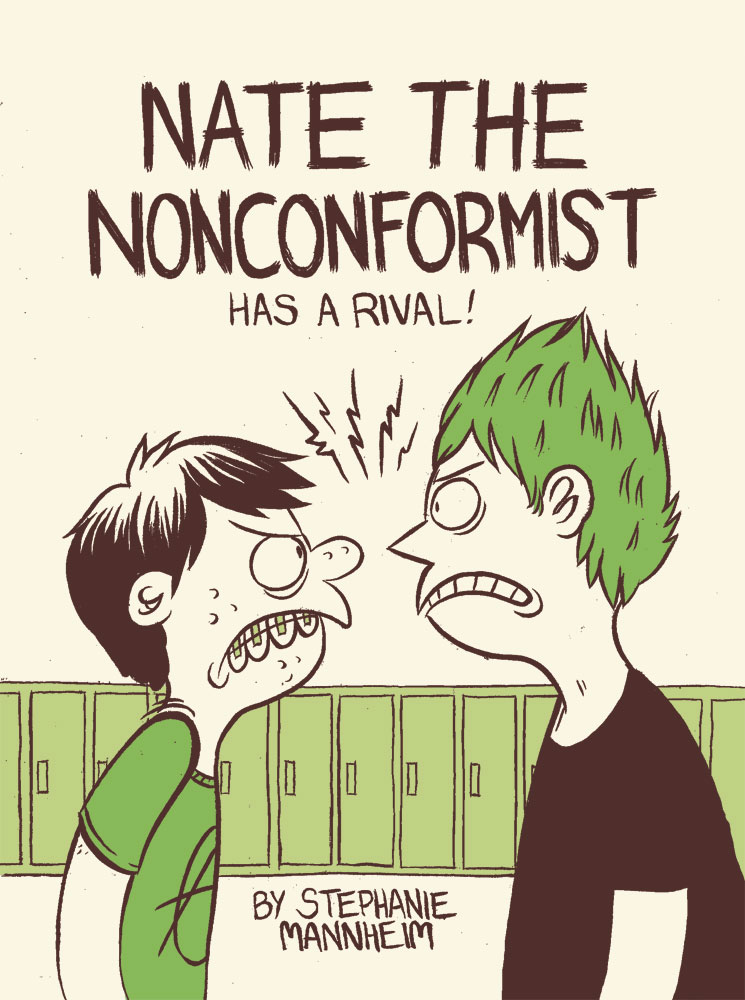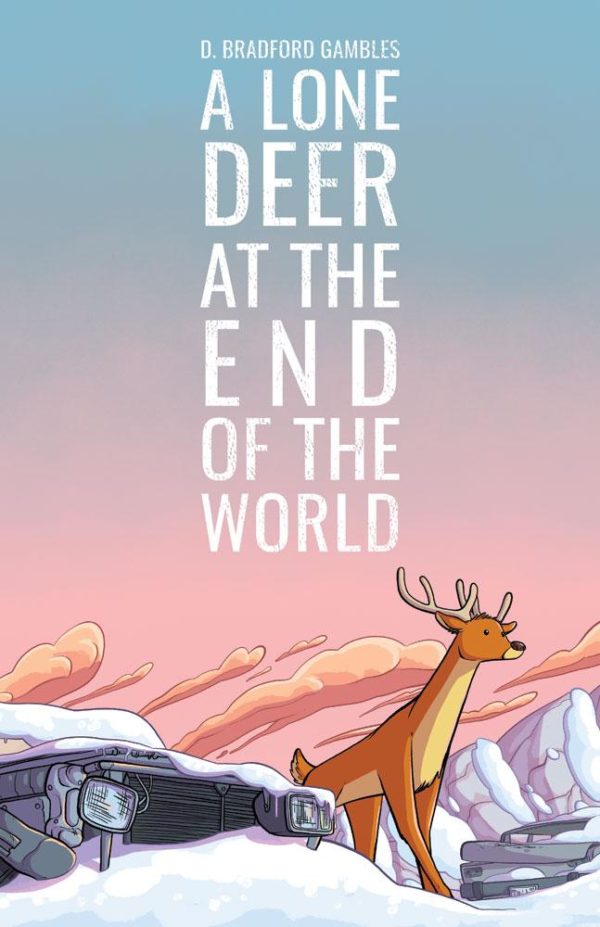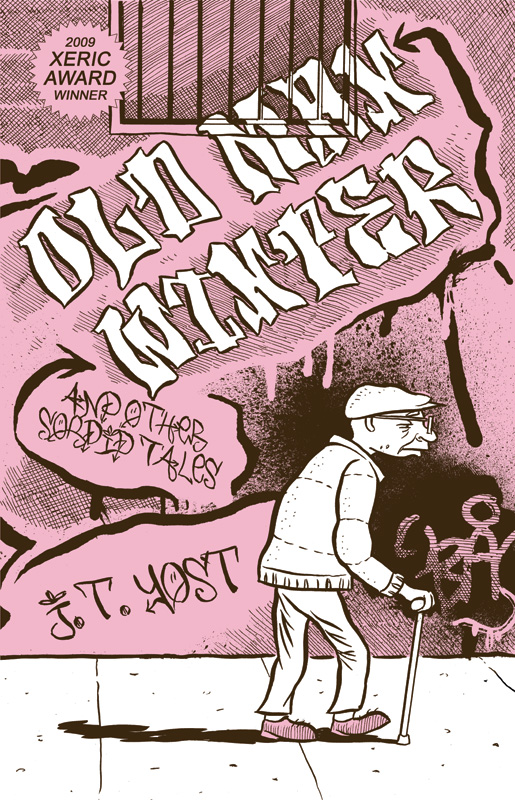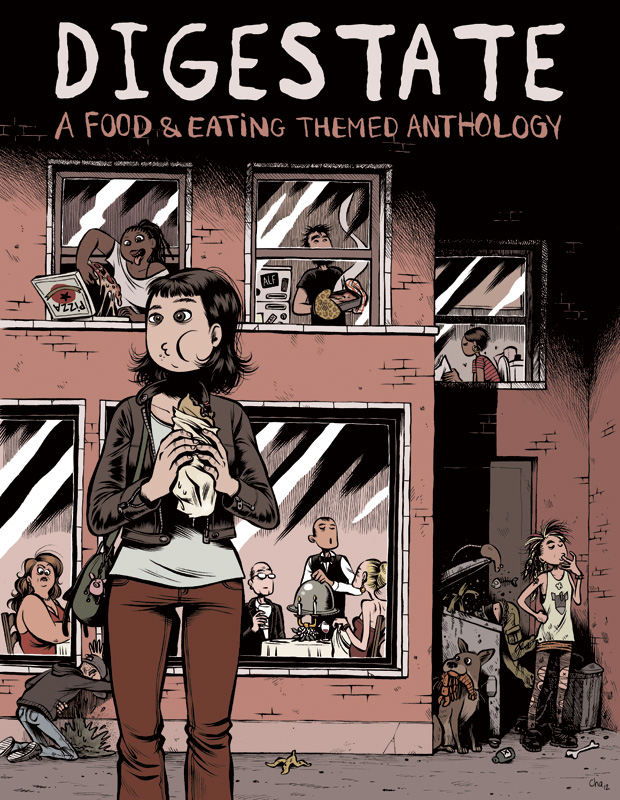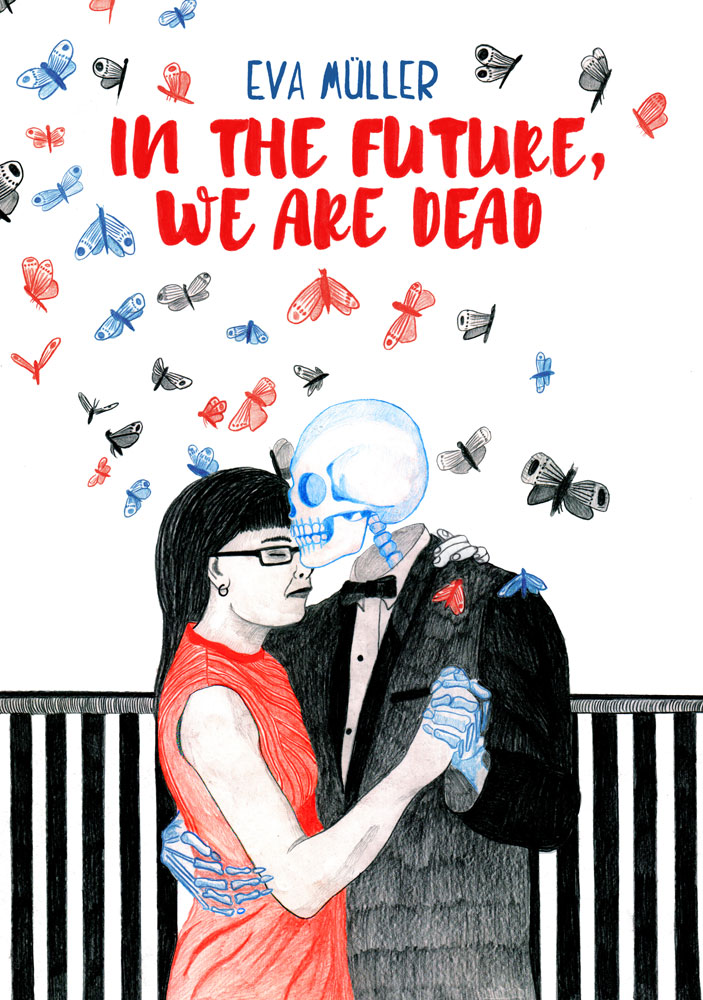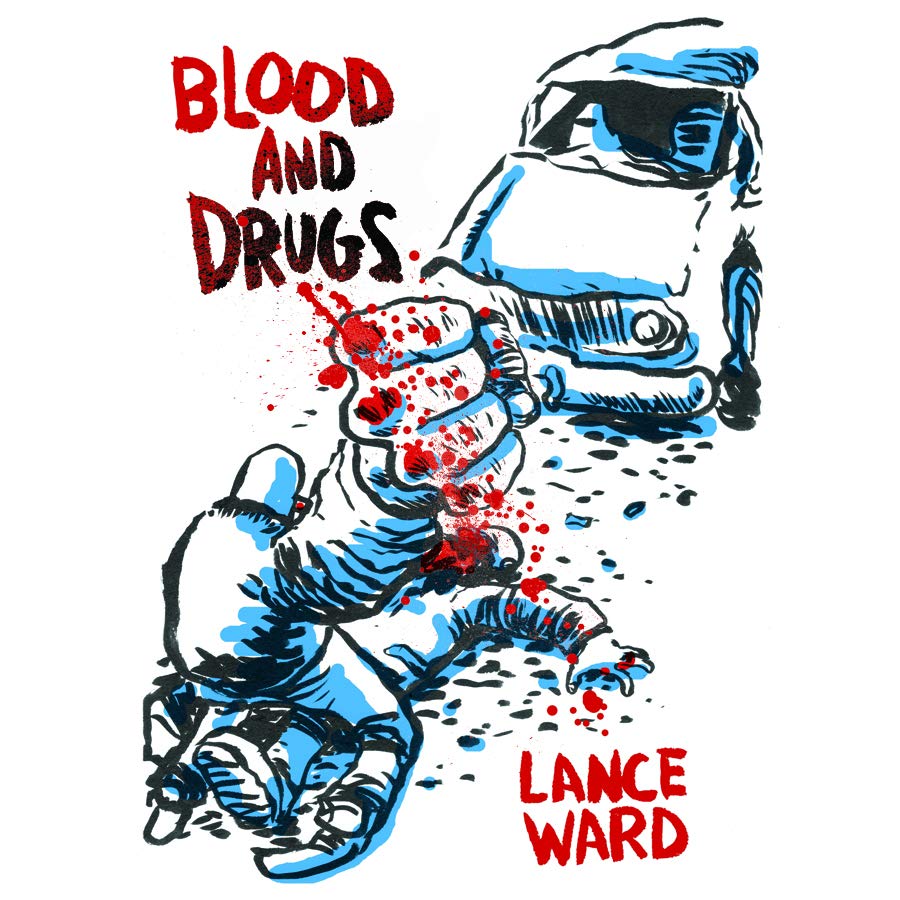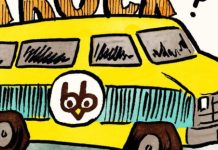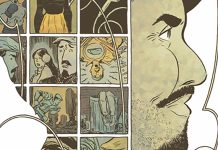Birdcage Bottom Books is one of those publishers that quietly goes about its business. Never splashy, and spare in its releases when compared to other publishers, its low-key approach has succeeded in widening the scope of the kinds of comics that exist in the world, works by creators like Stephanie Mannheim, Lizz Lunney, Sara Lautman, and others. With a distribution side to its operation, it’s also provided a helpful path to discovery to self-published and mini-comics.
The guy behind it is J.T. Yost, whose love for the form includes not just the business side, but the creative one as well. Yost has drawn for as long as he can remember, and as a kid was a big fan of newspaper comics like Peanuts, Garfield, Bloom County, and others.
“I remember drawing a lot of like Snoopy and Charlie Brown when I was a kid,” Yost says. “I didn’t know there were forms of comics other than newspaper comic strips.
Around middle school he came up with a comics strip idea that he hoped to sell as a syndicated strip and did the work to make his dream come true, creating a collection of daily strips with Sunday standalone strips into a body of work that he planned to submit somewhere.
“It was based on a bunch of lab animals that were being vivisected and tested on and stuff,” says Yost. “They were all these freaks of nature. There was a two-headed cat and I don’t know what else.”
That plan didn’t quite work out. Yost didn’t get far enough to be rejected. Instead, a girl in his class asked if she could borrow them and read them. Yost handed them over.
“That was the only copy I had, it was the originals, and she never gave them back,” Yost laments. “I always think about that.”
Unfortunately, he doesn’t remember her name. At least his experience with Garfield creator Jim Davis didn’t result in such a loss.
“I remember drawing a bunch of ideas for Jim Davis,” Yost says. “It was some kind of storyline with Garfield and there was some robot that looked suspiciously like R2D2 that for some reason had been brought into the home. I think it was maybe a vacuum or something like that. And so they would argue.”
Yost worked up a few comic strips of the idea and sent them along to Davis, telling him he could free to use the ideas if he wanted.
“He wrote back,” Yost says. “I don’t know if it was a form letter or whatever, but I remember getting a little piece of stationery that said something nice on it and had his signature. I don’t know if he actually read them.”
Comics weren’t quite out of his system when he hit college age. There weren’t any comics programs in the early ‘90s, so Yost ended up studying the closest thing to it, illustration, along with fine art and sculpture courses that he liked, though which he found looked down on comics. This didn’t exactly encourage him to create any.
But at the same time, he was expanding his comics knowledge, finding out that, yes, there was a world of them beyond the comics page of his daily newspaper. Thanks to new friends, Yost dived into the work of Dan Clowes and Chris Ware and started reading RAW magazine.
“I lived in this big punk house with a ton of other people and we had shows there and stuff all the time.,” he explains. “And so there was a lot of people coming in and out and a few 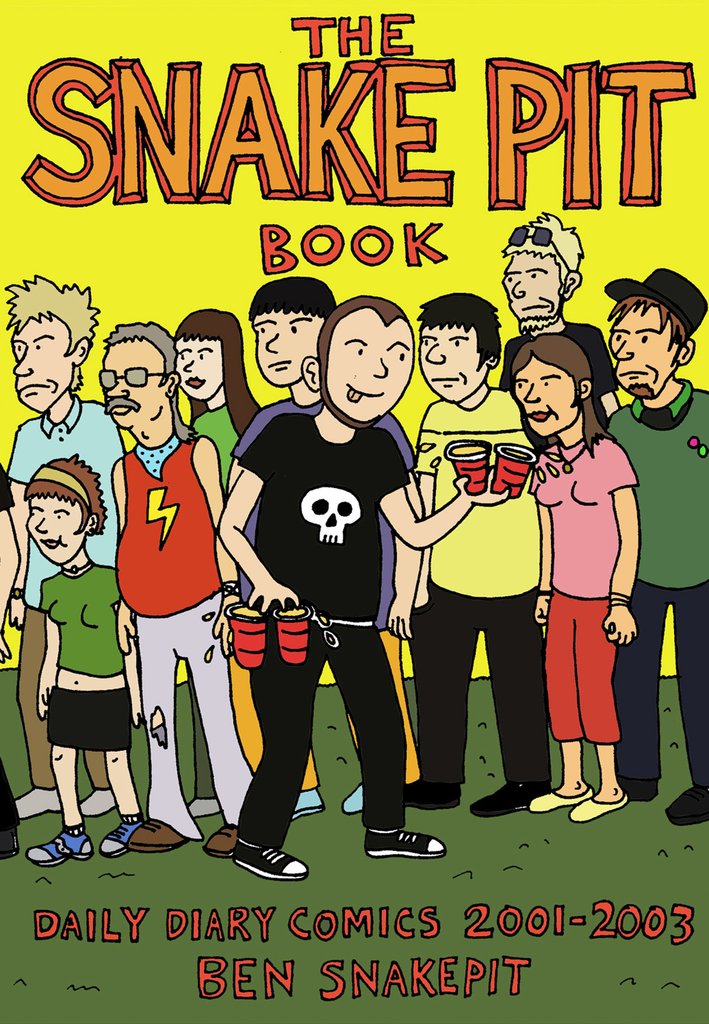
Yost also made the acquaintance of fellow student Tod Parkhill, who ran Young American Comics, and began contributing to themed anthologies like BIZMAR, which asked that each story contain a bunny, an insect, a zombie, a monkey, an alien, and a robot.
“Those early things are pretty embarrassing, but they really, they got me involved in doing it and for whatever it was worth published and that was kind of fun,” Yost says.
The turning point for Yost was a visit to MoCCA Arts Festival in 2008, where he heard James Sturm on a panel about how to apply for a Xeric Grant. Yost gathered together his Young Americans work and added an unpublished longer piece for his submission and won the grant, which set him in motion to learn the business aspects of self-publishing comics, as required of grant winners, and to come up with a name as a self-publisher. Birdcage Bottom Books was born.
Yost’s collection Old Man Winter was followed up with comics by Ben Snakepit since Yost didn’t just want to publish only his own work.
“Since I did all the work of setting that up, I kept going from there,” he says.
Yost was able to become more inclusive of other people’s comics by adding on a distribution wing of Birdcage Bottom, which came from an experience at a show where another small publisher who couldn’t make it asked Yost if he could sell some books for him at Yost’s table.
“I realized when I did that at the show that I was better at promoting other people’s stuff than my own,” Yost says. “And so I was like, Oh, wouldn’t it be cool if we got all of these self-publishers or small press people together under one umbrella so stores can order from one place instead of having to do a bunch of separate invoices for each individual?”
After that, Yost juggled the two sides to the business, publishing minis with the idea that he could assemble them himself and get them to local shops in the New York City area.
“I only put maybe two books out every year,” Yost says. “I really like minis, handmade stuff and if I can do risograph or screen printing or anything like that. I like limited edition harder to track down kind of stuff that you’re not gonna find on Amazon.”
In the early years, Yost brought in other creators just by asking. He worked at an art store in Manhattan and on lunch breaks walk over to Forbidden Planet to go through the shelves of self-published and mini-comics, and talk to staff for suggestions. He kept tabs on what he liked best and when the time came for him to put together an anthology, he had a list ready of cartoonists to approach.
Yost says that as a vegan, he had noticed a lot of vegan cartoonists putting out work, and intrigued by the idea of “subculture within a subculture,” he conceived of an anthology to explore that. He later drifted to the concept of a split anthology with flipbook covers, one side vegan, the other side omnivore/carnivore, and then finally into one big collection covering “the whole spectrum of how people eat,” which would become the 2012 release Digestate, with funding raised through Kickstarter and contributors like James Kolchalka, Jeffrey Brown, and Renee French.
“I asked every cartoonist that I liked and I shot high and asked people that I didn’t think would actually contribute,” Yost explains. “And I ended up getting all these people that 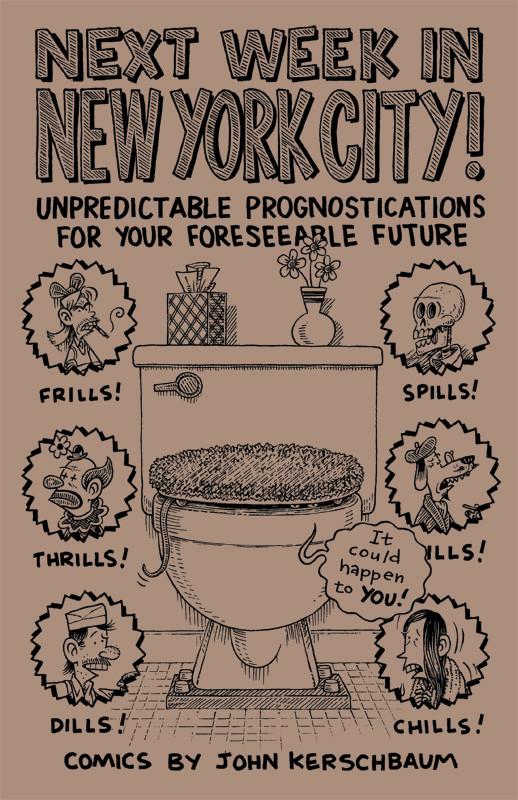
Yost later successfully utilized Kickstarter to release new titles in 2018 and 2019, which has helped him publish a more daring variety of titles and take some chances that he wouldn’t normally be able to do, like the full-color volume of German cartoonist Eva Müller’s comics, In the Future We Are Dead. Yost says that over the last few years Birdcage Bottom has started being approached by people looking for a publisher and Müller was one of those.
“Initially the artwork, it’s not that it didn’t grab me, but it wasn’t the sort of artwork that I usually gravitate to,” Yost says. “After I started reading it, the storytelling was so compelling that it grew on me, the artwork. I had never published a full-color comic at that point and I didn’t think I could afford to, so I was just trying to help her find another publisher at first. And then the more I like sat with it and thought about it I was like, you know, I’m gonna find a way to put this out because I couldn’t stop thinking about it.”
Yost says that within the variety of styles that he’s published most recently, the commonality between them is the talent for narrative. He says he has less interest in experimental abstract comics, appreciates levity in the comics he publishes, and admits to preferring clean lines that seem influenced by the newspaper comics that meant so much to him. But that’s not a regiment and works like Lance Ward’s Blood and Drugs find a way to fit in with that criteria.
Yost had earlier exhibited an interest in comics about addiction with the anthology Bottoms Up! True Tales of Hitting Rock-Bottom and he was already enthusiastic about Ward’s work. Ward had originally planned to submit to Bottoms Up, but whatever he was working on had blossomed into something longer. That turned out to be Blood and Drugs, and Ward submitted a few chapters to Yost. It’s an autobiographical work that shared one factor that for Yost, made Ward’s artwork even more enticing. In the comic, the main character crushed his drawing hand. The same thing had happened to Ward.
“He was using the Blood and Drugs comic as therapy almost where he was using a brush and he was sort of balancing it on his hand because his grip was really bad,” explains Yost. “It made this much looser style that I really, really liked. I liked his autobiographical work previous to that, but I felt like this loosened up his work so much that it really grabbed me.”
Yost is currently making plans for Birdcage Bottom in 2020 and part of that includes some new comics from Ward with Flop Sweat #1, which collects his previously self-published autobiographical comics in chronological order, scheduled to debut at the 2020 MoCCA Fest. Yost says that he has two titles scheduled for an SPX debut — Mike Freiheit‘s Woods, a horror story centering on struggles with mental illness and an attempt to retreat from a toxic political situation, and November Garcia‘s Malarky #5, the final issue of this collection of autobiographical comics depicting “the arc of 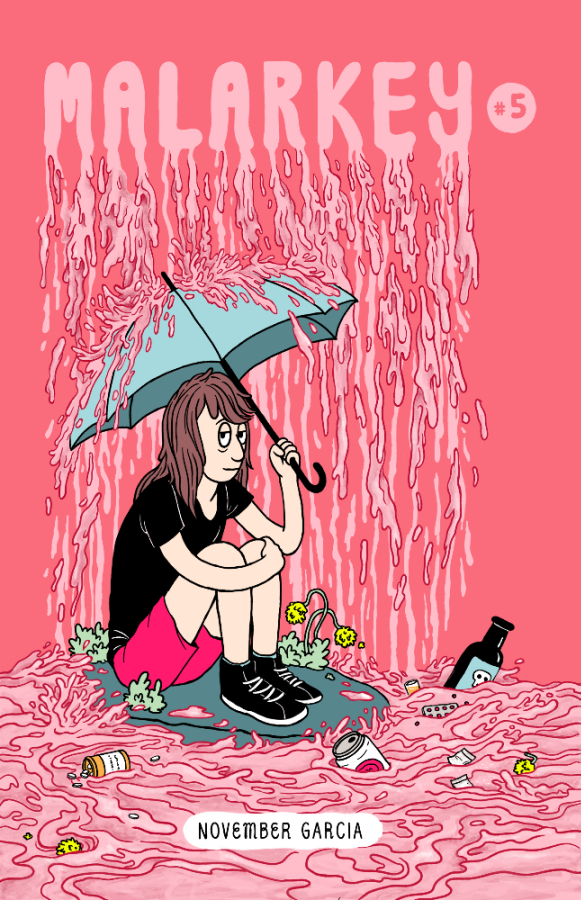
Yost has also scheduled a collection of Patrick Dean‘s crime comic Eddie’s Week and Thomas Lampion‘s The Burning Hotels for a CAB debut, a memoir that also looks at the history of his eccentric hometown Hot Springs, North Carolina and some strange events there. In addition, Max Clotfelter‘s Rooftop Stew and Stephanie Mannheim’s Nate The Nonconformist Has a Rival! will be reprinted. As with the past couple of years, Yost will turn to Kickstarter to help with the year’s line-up. He’s expecting the campaign to begin sometime in February.
But Yost is also hoping that 2020 offers something he’s been wanting for a while — a return to working on his own comics. He’s already completed a 23-page story for Robyn Chapman’s American Cult anthology.
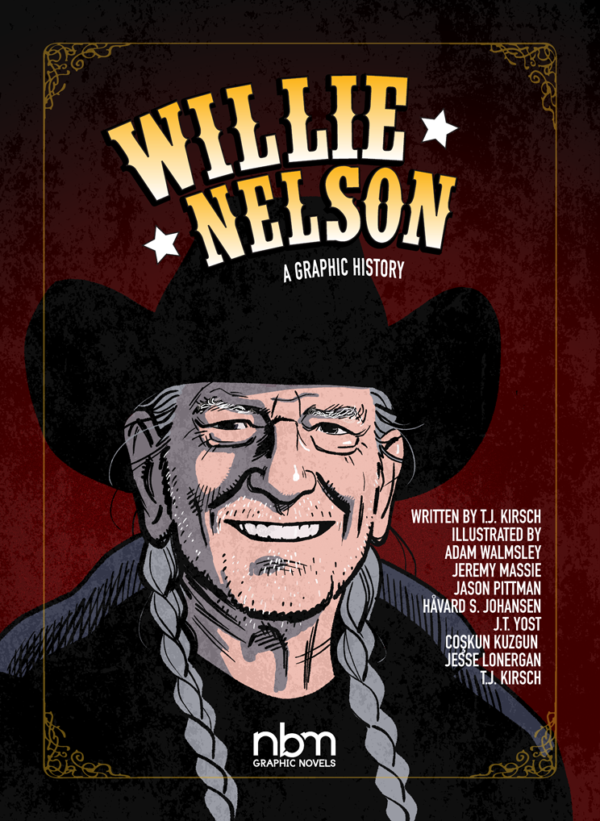
“That’s really fun because I love Willie Nelson,” says Yost. “It’s interesting because I’ve never done comics that somebody else wrote, and sort of to a certain extent he’s providing me with the text and also the layout, which is different than how I’ve ever worked.”
Yost is also looking back to some unfinished projects that he wants to revisit. He mentions one from 2009 that’s been on his mind, for instance. And there’s always that vivisection strip if only he could remember the girl’s name.
“I don’t think she did anything intentionally,” Yost says. “I just think she borrowed it and then forgot about it and I just never got it back. I think about it sometimes. It’d be interesting to see those, but they’re gone.”


